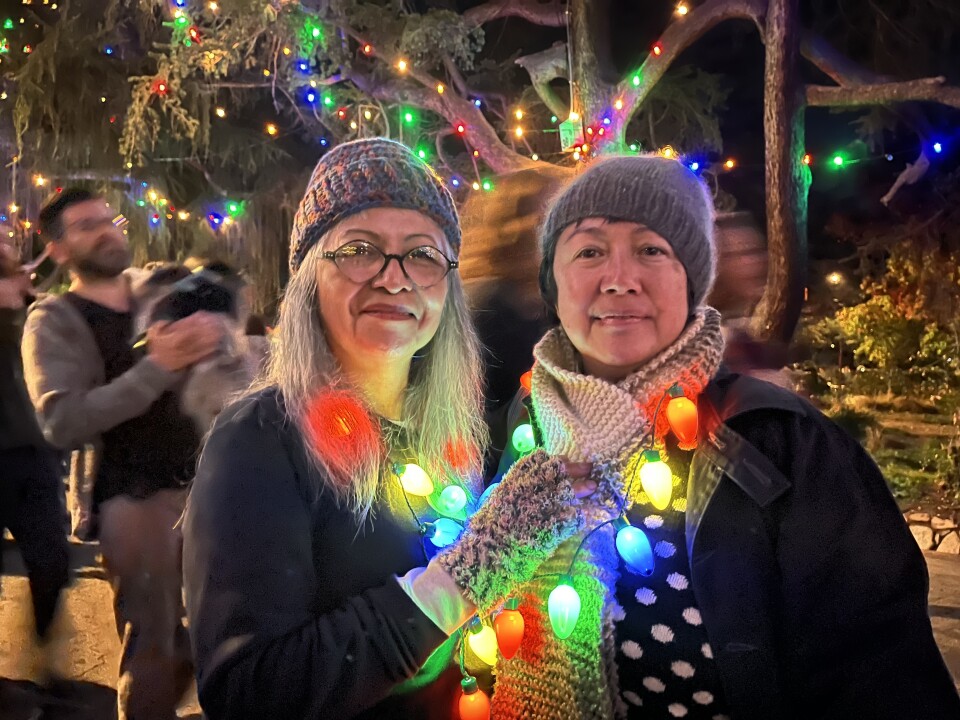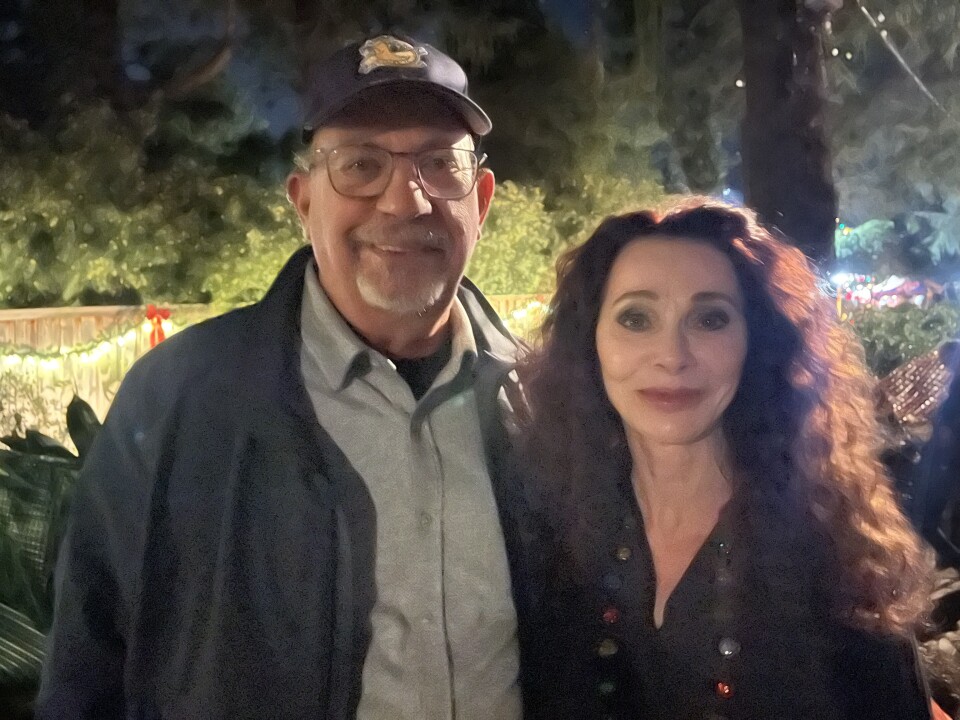Imitation, it's often said, is the sincerest form of flattery.
But in the case of the internet's favorite bald eagles, Jackie and Shadow, that has meant an explosion of fake social media accounts that have nothing to do with the official Big Bear Valley nonprofit behind the nest cam on YouTube.
Sandy Steers, executive director of Friends of Big Bear Valley, said fans started noticing copycat accounts on Instagram and Facebook a few years ago.
Growing popularity
But as eaglets have emerged and endured (or not, in the case of one unfortunate chick) snow and wind, the imitators’ presence has grown.
According to the nonprofit, some 2.5 million unique visitors checked out the official Friends of Big Bear Valley website in the last 30 days. Their Instagram, launched in late 2024, has more than 80,000 followers. As for the live YouTube nest cam — that's at 588,000 subscribers and counting.
Growing pains
"Just this year is when everything started multiplying like crazy," said Steers, adding that the group has been filing takedown requests with social platforms when they spot imitators. "We're still working on a lot more. It's like they're popping up faster than we can keep a handle on it at this point."
Steers said there are knockoff accounts selling merchandise for a profit — and in some cases falsely claiming that the proceeds will go to the Friends of Big Bear Valley. And in others, they’re making up stories about the bald eagle family to gin up more clicks.
Ways to safeguard your content
The Big Bear nonprofit that has made the parenting saga of Jackie and Shadow a must-watch stream is experiencing something that many successful content producers have had to grapple with — how to protect their content from exploitation.
Kristina Mitri is the vice president of social media and email marketing at Studio 3, an agency specializing in internet marketing with offices in Los Angeles and other cities.
Mitri said fake accounts is commonplace in the social media space. One tip for creators is to watermark or put an official logo over their content to prevent exploitation.
And once a copycat is identified, to let their fans and followers know. Finally, Mitri says to consider seeking legal counsel for protection.
"Social is ever evolving," Mitri said. "There's a lot of unknowns and so it's important to realize that each case is unique and to set a precedent. It could help others in this space going forward."
Given all the time and resources spent on the issue of fake accounts, Steers said the group is indeed looking into their legal recourse.
"That's taking away from our funds, taking away from our time that we could be helping other people to understand the eagles," Steers said.
Do they have a case? One perspective
With the live nest cam, the case of infringement might be hard to make, according to copyright expert Justin Hughes.
Hughes, a law professor at Loyola Law School, said that there are two conditions for copyright laws.
First, it requires fixation — meaning a work claiming copyright protection needs to be in a permanent or a semi-permanent form. Think a photograph or a painting.
"The phrase we use is 'fixed in a tangible medium of expression,'" Hughes said. " So a livestream by itself by definition is not subject to copyright."
But that condition could be met if the livestream is recorded — even if the recording is not made available to the public.
Now onto the second condition: human creativity.
"Copyright protects what we call original expression," Hughes said, citing Supreme Court precedents, "that shows a modicum of creativity."
In the court of law, the live eagles cam would unlikely be considered a work of "human original expression."
"Nothing that happens in the frame, nothing the birds do...it's not original expression," he said.
One possible argument, Hughes said, could be made over the angle or placement of the camera — but not if it's random or arbitrary.
"That there are unscrupulous people taking their video feed doesn't surprise me, and it saddens me," Hughes said. But "copyright is not going to give them much help.
A different perspective
Eleanor Musick, an attorney in San Diego who specializes in intellectual property law and who is representing the nonprofit, offers a different conclusion based on the inner workings of the nest cam.
The livestream is indeed recorded, she said. In addition, the two cameras capturing footage are controlled by someone at all time, Musick said, "who chooses when to zoom, when to pan, when to incorporate sound from a microphone on a separate camera and when to activate infrared lighting."
Such actions, she said, fits the definition of "original" expression.
Despite the prevalence and popularity of this type of content, Musick said, it's uncharted territory where the nonprofit has found itself in.
"I am aware of no court decisions to date regarding the copyrightability of trail camera or surveillance camera videos," Musick said.
Accept no substitutes
As Friends of Big Bear Valley navigates these new terrains, Steers reminds new and longtime fans to keep an eye out.
"Anything that they see, you know, if they can just make a point of seeing what really is from Friends of Big Bear Valley and what is authenticated by us," Steers said.





























